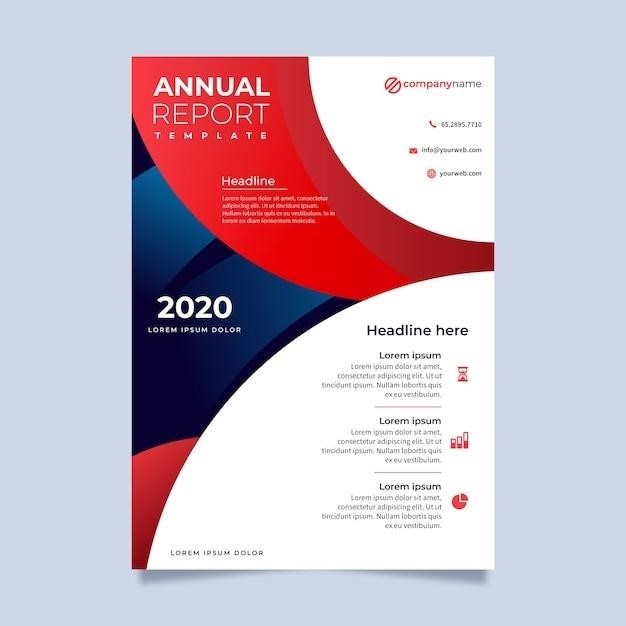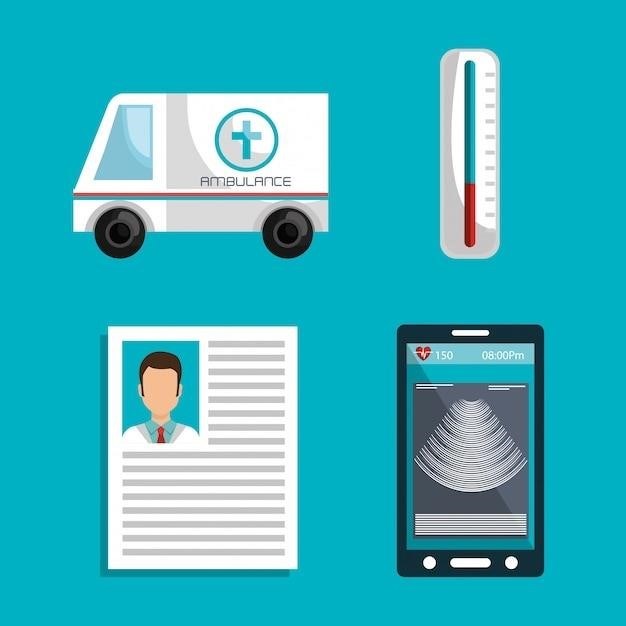team charter example pdf
Team Charter Example PDFs⁚ A Comprehensive Guide
This guide explores the essential aspects of team charters, offering examples and templates in PDF format. Discover how to create effective team charters that foster collaboration, clarify roles, and achieve shared goals. Downloadable examples are readily available.
What is a Team Charter?
A team charter serves as a foundational document outlining a team’s purpose, goals, and working agreements. It’s a collaboratively created agreement that sets expectations for team members, defining roles, responsibilities, and communication protocols. Think of it as a roadmap guiding the team’s journey towards shared objectives. The charter typically includes a clear mission statement, defining the team’s overall purpose and desired outcomes. It also details specific, measurable, achievable, relevant, and time-bound (SMART) goals, providing clear targets for the team to work towards. Crucially, a team charter establishes how the team will make decisions, resolve conflicts, and communicate effectively. This ensures a unified approach and prevents misunderstandings.
By explicitly documenting these elements, a team charter enhances transparency, accountability, and collaboration within the team. It fosters a shared understanding of the team’s direction, responsibilities, and expectations, thereby streamlining workflows and promoting a more cohesive working environment. Ultimately, a well-defined team charter contributes significantly to project success by providing a structured framework for team operations.
Why Use a Team Charter Template?
Utilizing a team charter template offers numerous advantages in establishing a productive and efficient team. Templates provide a structured framework, guiding the team through the crucial process of defining its purpose, goals, and working methods. This structured approach ensures that no critical element is overlooked, leading to a more comprehensive and effective charter. Templates often include pre-defined sections for key components such as team goals, roles, communication strategies, and conflict resolution processes, saving time and effort in the charter creation process. The use of a template ensures consistency and completeness across different teams, promoting standardization and facilitating easy comparison.
Furthermore, readily available templates, whether free or paid, offer various formats (Word, Excel, PDF) catering to diverse preferences and needs. This versatility allows teams to choose a template best suited to their specific requirements and technological capabilities. A well-designed template not only streamlines the creation of the charter but also improves its clarity and readability, enhancing its overall effectiveness as a guiding document for the team. In essence, a template serves as a valuable tool, optimizing the team charter creation process and ensuring a high-quality, functional document.
Key Components of a Team Charter
A comprehensive team charter typically includes several key components to ensure its effectiveness. Firstly, a clear and concise mission statement outlining the team’s overall purpose and objectives is crucial. This statement provides a guiding principle for all team activities. Secondly, defining team goals and associated success criteria is vital for establishing measurable benchmarks. These goals should be specific, measurable, achievable, relevant, and time-bound (SMART). Next, clearly outlining individual roles and responsibilities prevents confusion and overlaps, promoting accountability. A well-defined communication plan, specifying methods, frequency, and escalation paths, ensures smooth information flow. Furthermore, establishing decision-making processes, whether consensus-based or delegated, is essential for efficient operations.
Addressing potential conflict resolution mechanisms proactively helps maintain a positive team dynamic. Finally, including a section for team values and principles fosters a shared understanding of the team’s culture and working style. These components, when thoughtfully developed and documented, contribute to a robust and effective team charter that guides the team throughout its lifecycle, promoting collaboration and success.
Benefits of Using a Team Charter
Implementing a team charter offers numerous advantages for project success and team cohesion. Firstly, a well-defined charter enhances communication and collaboration by establishing clear expectations and processes. This reduces misunderstandings and streamlines workflows, leading to increased efficiency. Secondly, it fosters a sense of shared ownership and accountability among team members. By collaboratively creating the charter, team members are more invested in achieving the outlined goals. This shared responsibility encourages active participation and commitment. Thirdly, a team charter helps in conflict resolution by establishing procedures for addressing disagreements and managing conflicts constructively. This proactive approach prevents disputes from escalating and disrupting team dynamics. Moreover, the charter serves as a valuable reference document throughout the project lifecycle, ensuring consistency and alignment across all team activities. Finally, using a team charter can improve project outcomes by providing a clear roadmap and framework for achieving defined goals. The collective effort invested in creating and adhering to the charter results in enhanced productivity and improved results.
Creating an Effective Team Charter⁚ Best Practices
Crafting a truly effective team charter involves a collaborative and inclusive process. Begin by clearly defining the team’s purpose and goals, ensuring everyone understands the overarching objective. Next, establish roles and responsibilities for each member, outlining individual contributions and avoiding ambiguity. Determine how decisions will be made, whether through consensus, voting, or delegation, ensuring transparency and fairness. Outline the team’s communication plan, specifying preferred methods, frequency, and response times to maintain consistent and efficient information flow. Address conflict resolution procedures, establishing a clear process for handling disagreements and ensuring a respectful environment. It’s crucial to define meeting protocols, including frequency, duration, and agendas, optimizing meeting effectiveness. Remember to document decision-making processes, outlining the steps involved in reaching conclusions and ensuring all members are informed. Finally, establish a process for regular review and updates of the charter to ensure it remains relevant and adaptable to evolving circumstances. This iterative approach enhances the charter’s longevity and effectiveness.
Team Charter Templates⁚ Formats and Availability
Team charter templates are widely available in various formats to suit diverse needs and preferences. Common formats include Microsoft Word (.doc or .docx), Excel (.xls or .xlsx), and Adobe PDF (.pdf). These readily adaptable templates provide pre-structured outlines, simplifying the process of creating a comprehensive charter. Many websites offer free downloadable templates, providing a convenient starting point for teams with limited resources. These often include sections for team goals, roles, responsibilities, communication strategies, and conflict resolution methods. Premium templates, available through subscription services or individual purchases, may offer more advanced features, such as interactive elements or customized branding options. The choice of format depends on the team’s familiarity with software and the level of customization required. Regardless of the format, a well-structured template ensures consistency, clarity, and ease of use, facilitating team collaboration and goal achievement. Consider the team’s specific needs and technological capabilities when choosing a template.
Free vs. Paid Team Charter Templates
The choice between free and paid team charter templates involves weighing convenience and cost against potential added features and support. Free templates, widely available online, offer a basic framework, often including essential sections for defining team goals, roles, and communication protocols. While convenient for quick setup, they may lack advanced features or customization options found in paid templates. Paid templates, typically offered through subscription services or individual purchases, often provide more sophisticated designs, interactive elements, and potentially additional support. These might include pre-populated content examples, advanced formatting capabilities, or access to user communities or professional guidance. The added cost reflects enhanced functionality and potentially streamlined workflow improvements. The best choice depends on a team’s budget, technical expertise, and the complexity of their project. A simple project might benefit from a free template’s simplicity, whereas a complex, large-scale initiative could justify the investment in a paid template for its added features and support.
Choosing the Right Template for Your Needs
Selecting the optimal team charter template requires careful consideration of several key factors. First, assess your team’s size and complexity. A small team with a simple project might find a basic, free template sufficient. Larger teams or those undertaking complex projects may benefit from a more comprehensive, potentially paid, template offering advanced features and customization. Second, consider the specific needs of your team’s workflow. Do you need tools for tracking progress, managing tasks, or facilitating communication? Select a template that integrates seamlessly with existing tools and platforms. Third, evaluate the template’s ease of use and customization. Choose a user-friendly template that is simple to navigate and adapt to your team’s specific requirements. A template with clear instructions and helpful examples is especially valuable for teams new to using charters. Finally, factor in the level of support offered. Some paid templates include access to customer support or online communities, which can prove invaluable when troubleshooting or seeking guidance. The ideal template balances functionality, ease of use, and support to best meet the unique requirements of your team and project.
Populating Your Team Charter⁚ A Step-by-Step Guide
Effectively populating your team charter template involves a collaborative, phased approach. Begin by clearly defining the team’s mission and vision statements. These statements should concisely articulate the team’s overall purpose and long-term goals. Next, outline the specific objectives the team aims to achieve, ensuring they are measurable and time-bound. Clearly define roles and responsibilities for each team member, avoiding ambiguity. Then, establish communication protocols, specifying preferred methods, frequency, and escalation procedures for addressing issues. Document decision-making processes, outlining the methods used to reach consensus or resolve conflicts, promoting transparency and efficiency. Include a section for conflict resolution strategies, detailing how disagreements will be handled constructively, fostering a positive team environment. Finally, establish regular review mechanisms for the team charter, allowing for updates and modifications as needed, ensuring ongoing relevance and effectiveness. This structured approach ensures a comprehensive and functional team charter that serves as a valuable guide for collaboration and achievement.
Utilizing Team Charter Templates for Virtual Teams
Adapting team charter templates for virtual teams requires careful consideration of the unique challenges inherent in remote collaboration. Clearly defined communication protocols are paramount, specifying preferred tools (e.g., instant messaging, video conferencing, project management software) and response times to ensure efficient information exchange. Establish virtual meeting guidelines, including agendas, participation expectations, and methods for documenting decisions. Address technological challenges proactively, outlining troubleshooting procedures and contingency plans for technical difficulties. Consider incorporating sections on work-life balance and well-being to support remote team members and prevent burnout. Emphasize building trust and rapport through virtual team-building activities and regular check-ins. The template should also address potential communication barriers, such as time zone differences, and establish methods for overcoming them. Furthermore, the use of cloud-based document sharing and collaborative tools should be clearly outlined to facilitate seamless project management and resource access. These specific considerations ensure the team charter effectively supports the unique needs of a virtual team.
Maintaining and Updating Your Team Charter
A team charter isn’t a static document; regular review and updates are crucial for its continued effectiveness. Schedule periodic meetings (e.g., monthly or quarterly) dedicated to reviewing the charter’s relevance and accuracy. These sessions should involve all team members to ensure collective ownership and buy-in. Changes in team membership, project scope, or external factors may necessitate revisions to goals, roles, or communication protocols. Document all modifications clearly, noting the date, reason for change, and individuals involved in the revision process; Version control is highly recommended, saving previous versions for reference and tracking the evolution of the charter over time. Consider using a shared online document to facilitate easy access and collaborative editing. This approach ensures transparency and keeps everyone informed of any updates. Regularly assess the charter’s effectiveness by gauging team performance against established goals and identifying areas for improvement. Proactive maintenance ensures the charter remains a valuable tool for your team’s success.
Examples of Successful Team Charters
Analyzing successful team charters reveals key characteristics contributing to their effectiveness. High-performing teams often have charters with clearly defined goals, measurable objectives, and specific success criteria. These charters typically include detailed roles and responsibilities, eliminating ambiguity and promoting accountability. Effective communication strategies are clearly outlined, specifying preferred methods, frequency, and escalation procedures. They also address conflict resolution mechanisms, providing a structured approach to handling disagreements constructively. Successful charters often reflect a shared team vision, inspiring members towards a common goal. The inclusion of team values fosters a positive and collaborative work environment. Furthermore, successful charters are regularly reviewed and updated, reflecting the dynamic nature of team projects and evolving needs. By examining these examples, you can identify best practices for crafting your own effective team charter, ensuring your team is well-equipped for success. Remember to tailor your charter to your team’s specific context and needs.


